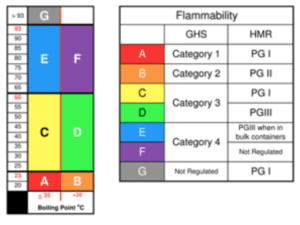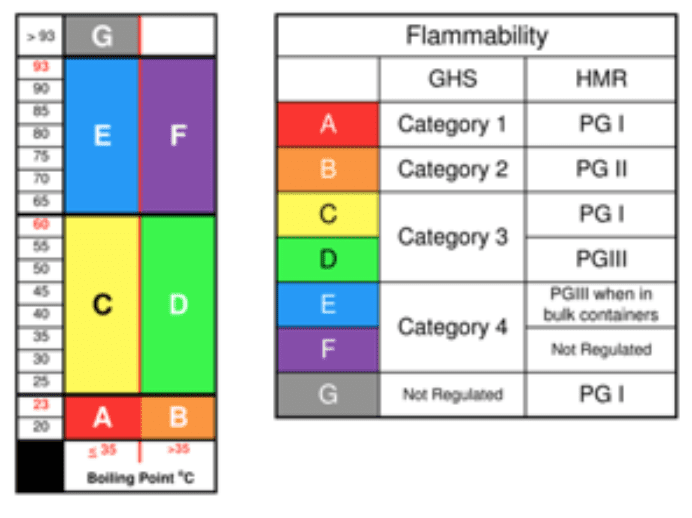Manufacturers and distributors alike are subject to compliance, but attitudes toward compliance from those entities range from blissful ignorance to deliberate defiance. But navigating the laws and agencies can prove challenging at best. The goal of this article series is to provide insight into the communication and handling of what is and is not hazardous and who is responsible for its compliance.
As with any subject, the terminology is a fundamental component of building a solid foundation of understanding. Often, the term ‘hazardous material’ is used to describe hazardous chemicals, hazardous materials, and hazardous substances. In this series, the term ‘hazardous products’ will serve as a collective reference to all things hazardous – chemicals, materials, and substances – to prevent confusion.
Hazardous Chemical ≠ Hazardous Material ≠ Hazardous Substance
One critical misnomer that leads to many hazardous product violations is the reference to all things hazardous as ‘hazardous materials.’ However, ‘hazardous material’ is defined by the Pipeline and Hazardous Materials Safety Administration as it pertains to transportation, ‘hazardous chemical’ is defined by OSHA regarding hazard communication, and ‘hazardous substance’ is the term the EPA uses to reference elements and compounds identified as hazardous to the environment.
Below are the definitions and references to these three terms:
- Hazardous Chemical: This refers to any chemical which is classified as a physical hazard or a health hazard, a simple asphyxiant, combustible dust, pyrophoric gas, or hazard not otherwise classified. For more information, see 29 CFR 1910.1200(c).
- Hazardous Material: This refers to any substance or material that the Secretary of Transportation has determined “is capable of posing an unreasonable risk to health, safety, and property when transported in commerce, and has designated as hazardous under section 5103 of Federal hazardous materials transportation law” (49 U.S.C. 5103). The term includes hazardous substances, hazardous wastes, marine pollutants, elevated temperature materials, materials designated as hazardous in the Hazardous Materials Table (see 49 CFR 172.101), and materials that meet the defining criteria for hazard classes and divisions in part 173 of this subchapter. For more information, see 49 CFR 171.8.
- Hazardous Substance: This refers to any substance the EPA defines as hazardous through designations in 40 CFR 302 and various tables throughout the regulations. For tables of hazardous substances, see 40 CFR 116.4 and 40 CFR 302.4.
This isn’t to say there isn’t overlap between the agencies as they do reference one another’s regulations.
For example, the EPA references reportable quantities for hazardous substances which are referenced by PHMSA in the HMR. OSHA refers to hazardous materials with regards to hazard communication. EPA references hazardous and universal waste as being subject to 49 CFR when being offered for transport. The United States Postal Service has its own regulations regarding hazardous materials transported through the mail since one federal agency cannot hold jurisdiction over another but directly references the HMR as the criteria that must be applied.
Hazardous Terms & Compliance
What makes the distinctions between the different hazardous terms so critical to compliance is that other agencies, beyond those mentioned above, reference these terms in their requirements.
For example, city governments will adopt building and fire codes, with some using the term ‘hazardous’ when referencing hazardous chemicals as defined by OSHA, while others reference hazardous materials as defined in the HMR. The problem then lies in the fact that what one agency identifies as hazardous the other may not.
Both GHS and the HMR define a flammable liquid based on closed-cup flashpoints, though GHS permits the use of open-cup values under special circumstances while the HMR does not. However, whereas GHS categorizes liquids as flammable when possessing a flash point of 93oC or less, only those with a flash point of 60oC or less are categorized as flammable under the HMR.
Another discrepancy between the two regulations is that the HMR places an emphasis on the hazardous nature of any liquid with a boiling point less than 35oC – regardless of its flash point – by further identifying it as Packing Group I or most flammable.
The tables to the right illustrate the differences between the GHS and the HMR in how flammable liquids are defined. The differences between what is defined as hazardous in GHS and the HMR also extends to other properties such as toxicity, where GHS casts a wider net as compared to the HMR.
Before achieving compliance, it is important to understand the agencies involved, how each agency defines what is hazardous, and what each expects in terms of hazardous products in order to understand hazardous compliance. Looking for a compliance partner, get in touch with the compliance experts at GSM today.


